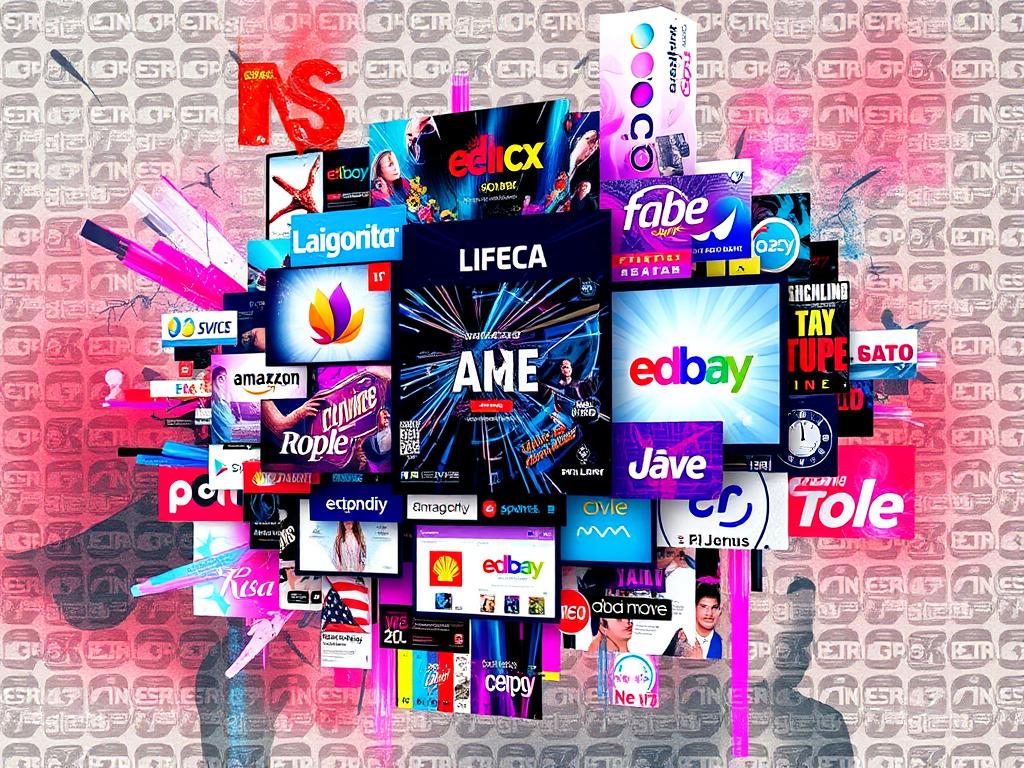In the ever-evolving landscape of digital marketing, understanding key metrics is essential for optimizing your advertising strategies. One vital metric to grasp is frequency in advertising. But what exactly does this term mean?
Frequency, in the context of advertising, refers to the average number of times your advertisement is shown to a unique user within a specific timeframe. It’s a critical element because it helps businesses determine the right level of advertising exposure to ensure their messages are effectively communicated to their audience. Understanding this metric is key to managing both the effectiveness and the efficiency of your ad campaigns.
Tracking ad frequency enables marketers to strike a balance. Too high a frequency can lead to ad fatigue, where your audience becomes annoyed by seeing the same ad repeatedly. On the other hand, too low a frequency may result in your message not being noticed at all. Therefore, it’s crucial to find a sweet spot that reinforces your message without causing annoyance, thereby helping to optimize ad campaigns effectively.
By carefully monitoring and adjusting your ad frequency, you can maintain ad relevance and engagement while also maximizing your advertising budget. The concept plays a pivotal role in the overall success of digital advertising efforts, making it an indispensable tool for marketers aiming to enhance both visibility and ROI.
Understanding Ad Frequency
Ad frequency plays a critical role in modern advertising strategies. By comprehensively understanding the number of times users are exposed to an advertisement, marketers can optimize ad visibility and maximize campaign effectiveness. Knowing how to balance impression frequency with reach ensures that ads resonate with the audience without irritating them.

Definition and Importance
Ad frequency refers to the number of times a specific advertisement is shown to a single user over a period. This metric is crucial as it helps advertisers gauge ad visibility while avoiding overexposure or ad fatigue. A well-managed ad frequency can significantly increase engagement rates by ensuring that ads are seen enough times to leave an impact but not too often to become annoying.
Examples and Calculation
Calculating ad frequency involves dividing the total number of ad impressions by the number of unique users. For instance, if an advertisement generates 1,000 impressions and reaches 500 unique users, the ad frequency is calculated as two. This means each user saw the ad twice. Regularly monitoring frequency metrics enables marketers to adjust their strategies for optimal performance.
| Ad Impressions | Unique Users | Ad Frequency |
|---|---|---|
| 1,000 | 500 | 2 |
| 3,000 | 1,000 | 3 |
| 5,000 | 2,000 | 2.5 |
Relationship with Reach
Synchronizing ad frequency with reach is paramount to a campaign’s success. While ad frequency focuses on the number of times ads are shown, reach measures the total unique audience exposed to those ads. Balancing these two aspects enhances engagement rates and ensures a wider audience is effectively reached without too much repetition, leading to improved return on ad spend (ROAS).
Why Ad Frequency Matters
Ad frequency plays a crucial role in advertising, impacting both engagement and return on investment (ROI). With consumers encountering tens of thousands of ads daily, finding the optimal frequency is essential for user engagement and brand recall. As consumers typically need to see a brand’s message at least seven times before taking action, it’s important to avoid both excessive and insufficient frequencies.

Impact on Audience Engagement
Effective frequency is key to maintaining audience retention. With the right number of exposures, you can enhance brand recognition and drive engagement. Analytics show that a balanced frequency, usually between 3-5 exposures, guides consumers from awareness to conversion. This strategy helps in acquiring critical consumer information by the second exposure, such as email addresses and phone numbers, which aids in retargeting efforts. Retargeting tactics like sending follow-up emails with coupons can significantly influence consumer behavior, increasing the likelihood of conversions by the third exposure.
Budget Optimization
Understanding ad frequency also contributes to marketing cost efficiency. Managing frequency in a single advertising environment can make campaigns up to six times more effective. If your ads are shown too often, it can lead to wasted budget and reduced ROI due to ad fatigue. Conversely, too few exposures may not be enough to establish brand recognition. For instance, ongoing monitoring and real-time adjustments based on consumer behavior can ensure optimal ad placement and budget allocation. Evaluating campaign data helps you understand how often ads are viewed and if adjustments are needed to achieve desired effects.
Preventing Ad Fatigue
Preventing ad burnout is another significant consideration. Overexposing the same advertisement can lead to ad fatigue, where the audience becomes annoyed with repetitiveness, negatively affecting their view of your brand. This not only diminishes engagement but can also tarnish your brand’s reputation. Techniques like frequency capping and refreshing ad content help in mitigating this risk. Regularly updating creative content and setting limits on how often ads appear per user ensures the campaign remains engaging without causing burnout.
Applying these strategies ensures your ads not only reach but also resonate with your intended audience at the right time, balancing frequency and relevance. This proactive approach to managing ad frequency is why ad frequency matters.
How to Optimize Ad Frequency
Optimizing ad frequency is essential for striking a balance between effective reach and avoiding ad fatigue. By employing strategic measures, advertisers can enhance campaign performance and maximize return on investment.
Setting Frequency Caps
Setting frequency caps helps regulate how often an individual is exposed to a specific ad. Options include hourly, daily, and weekly caps, preventing overexposure that can lead to ad fatigue. For instance, a frequency cap might limit an ad display to no more than three times per day per user, ensuring balanced exposure.
Utilizing Frequency Management Tools
Real-time frequency management tools on platforms like Google Ads play a crucial role in balancing ad frequency. These tools track ad performance metrics such as impression count and click-through rate (CTR), enabling advertisers to make data-driven decisions on their advertising strategies. Effective use of these tools ensures that the frequency is neither too high, causing ad fatigue, nor too low, leading to insufficient brand recall.
Testing and Monitoring
Testing different frequency levels is critical to finding the optimal ad exposure rate. By analyzing various KPIs in marketing, such as conversion rates and ad recall, advertisers can determine the effective frequency that yields the best performance. Monitoring these metrics helps in ongoing adjustments to the ad campaigns, ensuring sustainable and successful advertising strategies.
| Frequency Cap Type | Optimal Range | Purpose |
|---|---|---|
| Hourly Cap | 1-2 times/hour | Prevents immediate overexposure |
| Daily Cap | 3-4 times/day | Balances daily interaction |
| Weekly Cap | 10-15 times/week | Ensures longer campaign reach |
What Is Frequency In Advertising
Frequency in advertising refers to the number of times a target audience is exposed to a specific message or advertisement within a particular time frame. Understanding and calculating this metric are critical for optimizing campaign efficiency and ensuring the right balance between ad visibility and audience engagement. High-frequency campaigns aim to boost marketing exposure without causing ad fatigue among viewers.
In connected TV (CTV) campaigns, frequency indicates how many times each viewer encounters the ad during a campaign. Studies suggest that an average good frequency for Facebook ads falls between 1.8 and 4, ensuring optimal targeting without overspending on repetitive ads. Ad frequency is calculated as a ratio of impressions to reach, which provides the average number of times each unique user views an ad. By strategically setting frequency caps, advertisers can enhance campaign efficiency and prevent overexposure.
Effective frequency is defined by the number of times a person needs to be exposed to an advertising message before responding. Research indicates that seven or more exposures to a brand substantially increase the likelihood of customer purchase. Likewise, programs like programmatic advertising facilitate quantifying return on investment (ROI) at each touchpoint, enabling refined and targeted campaigns.
Media buyers need to balance exposing their target audience to ads sufficiently to foster brand recognition without overwhelming them. Optimal frequency enhances brand exposure and customer engagement, especially in niche markets or among ready-to-buy segments. Increased frequency generally leads to a more favorable audience response, but it’s crucial to spread out exposures to avoid flooding the audience within a short period. For television media, frequency is calculated by dividing the number of impressions by the total audience reached, while in radio, it considers both gross impressions and the total audience population.
| Advertising Medium | Frequency Calculation Method | Optimal Frequency Range |
|---|---|---|
| Connected TV (CTV) | Number of times an ad is viewed by unique users | Varies; strategic capping to avoid irritation |
| Facebook Ads | Ratio of impressions to reach | 1.8 – 4 |
| Television | Impressions divided by total audience reached | Spread across several weeks |
| Radio | Gross impressions times total audience | Repeated but spaced exposures |
How Does Calculating Reach Help Optimize Advertising Frequency?
Understanding how to calculate reach and frequency is essential for fine-tuning advertising strategies. By measuring how many people see your ads and how often, businesses can strike the perfect balance. This helps avoid overexposure while maximizing engagement, ensuring ad spend is effective and resonates with the target audience.
Conclusion
Mastering the concept of ad frequency is vital for improving advertising effectiveness and ensuring consistent messaging. As we’ve explored, striking the right balance through strategic frequency helps in reaching your marketing goals without overwhelming your audience. By understanding how often a target audience should see an ad, you can better determine the optimal frequency for your campaigns.
A well-calculated ad frequency leverages both reach and repetition to maximize recall and brand preference. While a high frequency can be beneficial for new brands or campaigns with complex messages, it’s important to avoid ad fatigue. This is where frequency caps and ongoing performance tracking come into play. These strategies help to maintain audience engagement and positive brand perception.
Incorporating different media channels such as television, radio, and digital platforms requires varying ad frequencies tailored to each medium’s nature. Utilizing tools to manage and adjust frequency mid-campaign and analyzing post-campaign performance can provide valuable insights. Ultimately, a nuanced approach to ad frequency ensures more effective marketing campaigns, better use of budgets, and enhanced audience reach.








